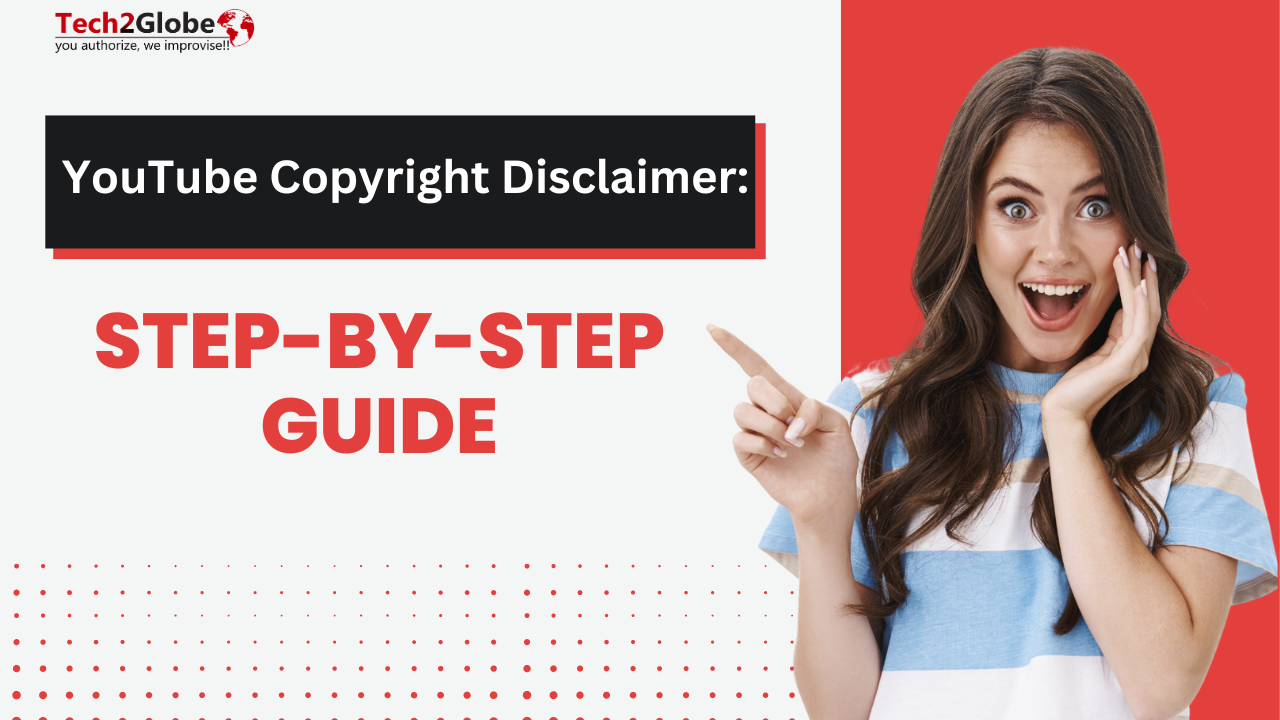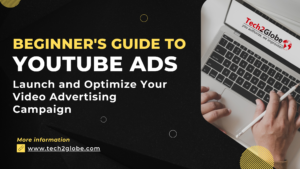Summary: A detailed guide on understanding and implementing YouTube copyright disclaimers. Find out its benefits, how to create them, how to display them, and explore the included FAQs for additional information.
YouTube copyright disclaimer
is the key to keeping your content secure, and we’ve got your back. We’re here to guide you step by step on how to protect your awesome creations with our YouTube advertising services.
If you upload YouTube videos, you may be required to add particular disclaimers in the video or video description. You may face legal consequences if you do not include releases in your films. This is because videos are taken just as seriously, if not more seriously, than articles and blog posts.
Copyright disclaimer for YouTube
is now regarded as essential because it has grown into a popular educational platform in addition to a source of enjoyment.
Many experts use the internet to communicate with their target audiences, while knowledge seekers use it to discover new information. When sharing information online, one must exercise caution to avoid possible problems if data is not used or processed correctly. A YouTube disclaimer can help avoid such legal difficulties.
What Is a Copyright Disclaimer?
A declaration that asserts ownership of the original content or exposes your use of copyrighted materials for “fair use” is known as a copyright disclaimer.
Suppose you possess brands, materials, videos, photographs, or other creative works you own and wish to convey your intellectual property rights. In that case, you must provide a copyright disclaimer on your website or inside your application. Additionally, it can prevent your works of parody, commentary, or criticism from being subjected to an unjust copyright infringement attempt.
Understanding YouTube Copyright Basics
A YouTube copyright disclaimer protects your intellectual property rights, prohibiting unlawful use, resale, and theft of your video. Although copyright protection is automatically applied when you generate original work, a copyright disclaimer allows you to state your rights and discourage plagiarism openly.
A copyright statement in your video adds another level of security for your original creation by informing viewers that you retain rights to the content. There is also a risk that some viewers are unaware of copyright laws, and without seeing a notice, they may mistakenly feel they can reuse or redistribute your film, which is not the case.
For example, placing a YouTube copyright disclaimer text for your music could stop others from utilizing it without permission.
Alternatively, if your video uses someone else’s copyrighted content for fair use, a legal YouTube statement can protect you from inappropriate plagiarism allegations.
Similarly, including a YouTube liability disclaimer will help protect you from litigation resulting from using any product, service, or advice mentioned in your video.
Benefits of Adding a YouTube Disclaimer
A YouTube disclaimer offers several benefits, let’s discuss each of them:
It Reduces Risks:
You should include disclaimers in your YouTube content to avoid liability concerns, especially if your videos provide advice or professional competence. Also, you must notify your viewers that your video is not a substitute for professional advice and that any action taken based on its content is entirely at their discretion.
To guarantee optimum efficiency, insert legal disclaimers in the description box, on your channel’s About page, or directly in the video itself.
Protect Your IP Rights:
Please include a short copyright Youtube Disclaimer in the description of your YouTube video to protect it from unlawful reproduction, reuse, or duplication without your permission. How can it be helpful? By doing so, you are indicating to your audience that copyright laws protect your video content and that you will take legal action against any plagiarism of your work.
If you already have a copyright notice on your website, copy and paste it into the description of your YouTube videos.
Cut Copyright Plagiarism Strikes:
If you add copyrighted content to your YouTube video, include a fair use notice to reduce your chance of receiving a copyright strike.
This disclaimer does not ensure you will not receive a copyright violation notice, but it can prove that you are aware of the laws, acted in good faith, and did not intend to exploit the original author’s work.
Steps to YouTube Copyright Disclaimer
Ready to protect your content on YouTube? Let’s learn how to create simple and effective YouTube copyright disclaimer text to keep your work safe.
Step 1: Writing a YouTube Disclaimer
You may create disclaimers for YouTube from scratch; however, keep your audience in mind and only include disclaimers most relevant to your material. For example, if you do not reference someone else’s copyrighted work in your YouTube video, you do not need to include a fair use notice. However, we recommend creating a disclaimer form to cover key rights, obligations, and liabilities associated with your YouTube video.

- Templates are typically free to download and adjustable, so you can alter them to match your YouTube channel’s demands without spending an arm and a leg.
- Well-written disclaimers already have the basic wording done for you, saving you time and ensuring you remember everything vital.
- Using a template is faster than creating a disclaimer from scratch. Alternatively, you may save even more time by using our Disclaimer Generator.
Step 2: Displaying Youtube Disclaimer
Place your YouTube video disclaimer where viewers can readily see it, such as:
In the YouTube video description box:
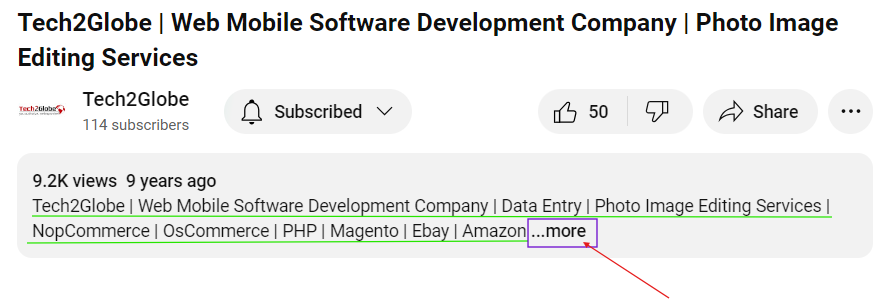
Most viewers go to the description box for extra information about YouTube videos, so include all possible disclaimers there.
Another example comes from YouTube commentator Amanda the Jedi, who adheres to FTC endorsement standards by placing her affiliate notice above the “Show more” button.
Another benefit of including disclaimers in your YouTube video description?-If you are wrongly copyrighted, someone tries to steal your content, or a viewer attempts to hold you legally liable for the facts offered in your video, you can use the information to support your case.
In the ‘About’ section of your YouTube channel:
Your YouTube user page collects all of your videos in one place and includes an ‘About’ section, making it an ideal place to insert any disclaimers you want to apply to your films.
For example, The Film Theorists is a movie review YouTube channel that occasionally includes fan art in their programming. Thus, they added a disclaimer on their ‘About’ page, which applies to all films released on their channel. However, it is crucial to remember that publishing a disclaimer in your channel’s ‘About’ section does not replace the need to include particular disclaimers, such as fair use or advising disclaimers, on individual videos or YouTube Shorts.
In the terms and conditions agreement:
If you publish videos on YouTube and have a website, you can include additional disclaimers in your terms and conditions agreement. This allows you lots of room to convey extra information that may be relevant to your disclaimers but does not necessarily fit in the description box or About page, such as:
- How to utilize affiliate links.
- Contact information for users who suspect copying or unauthorized use of your work and legal language to restrict liability.
Remember that only some people who watch your videos originate from your website. So make sure the disclaimers are posted somewhere clear for folks who solely visit your YouTube channel.
In the video content:
Another way to ensure your viewers know your YouTube disclaimers is to express them immediately in the video. This is especially critical if your video is sponsored or you must reveal an endorsement. A gaming YouTuber- The Completionist announces his sponsorship with Marvel Snap immediately, so viewers know the endorsement, and places the link above the “Show more” button to FTC requirements.
Step 3: Adding YouTube Disclaimer to the Video Description
This step provides instructions on how you can add a YouTube disclaimer to your content.
YouTube disclaimer to the video description:
- To add a disclaimer to your YouTube video’s description, log into your channel dashboard and then click “Content” from the menu on the left side of the screen.
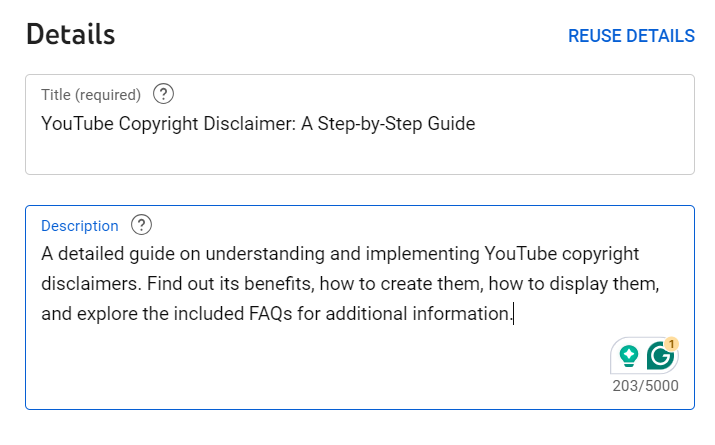
- If you wish to change an already-uploaded video on your channel, locate the proper one and choose “Edit”. Otherwise, follow the same steps when uploading a new video to your channel. If your disclaimer is hosted at a URL, copy and paste the link into the “Description box”.
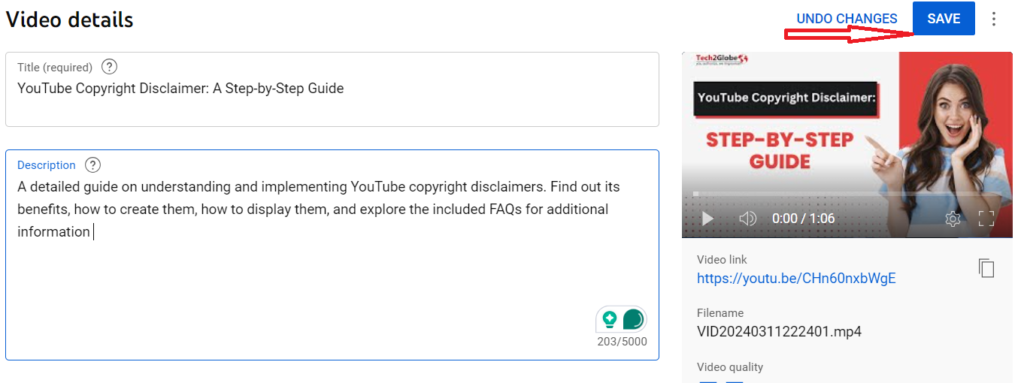
- When you’re finished, click “Save” in the top right corner of your dashboard and then click on your video.
YouTube disclaimer to your ‘About’ page in your channel:
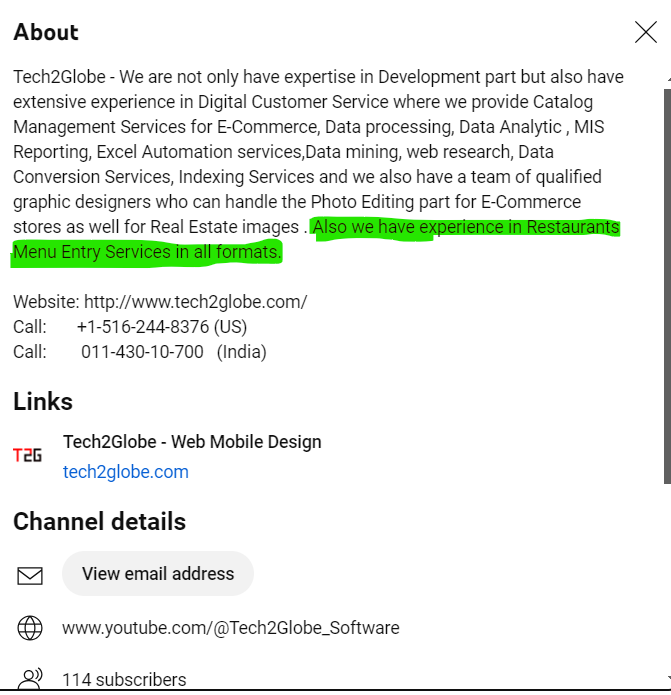
- To add a YouTube disclaimer to your About page, go to your YouTube studio and click “Customization” from the menu bar on the left side of the screen.
- Then, go to the “Basic Info” tab.
- Once on the following page, put your disclaimer straight to the Description area. If you host your disclaimers using URLs, copy and paste the link. Otherwise, enter the disclaimer information into the appropriate text box provided below.
- Once you’ve entered the necessary disclaimers, click the “Publish” button in the upper right corner of the screen and navigate to your channel.
YouTube disclaimer directly in the video itself:
To include a YouTube disclaimer right in your video, do both of the following:
- Express your disclaimer verbally.
- Put the disclaimer statement on the screen.
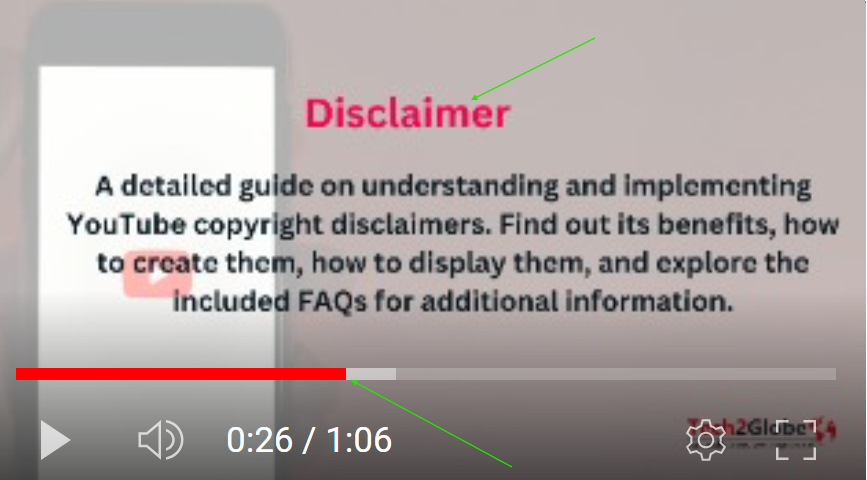
Make a recording of yourself speaking, whatever you normally write for your disclaimer. At the same time, consider displaying a warning on the screen. An effective disclaimer disclosure strategy for the following reasons:
- Your video contains fair-use content.
- You want to caution people against doing what they see you doing in the video.
- The video is sponsored, and you are promoting a product.
Who Needs a YouTube Disclaimer?
A disclaimer is required for all YouTube channel owners. It not only protects you legally, but it also ensures that your image is clean and transparent to users. The sort of disclaimer you require depends entirely on the content of your videos.
For example, if you provide legal advice to someone, it is usually best to emphasize specifically that they should see a lawyer before acting on your advice. You do not know the ground reality of all of the viewers. Everyone’s situation is unique. A disclaimer protects you against lawsuits that may emerge if a viewer has a problem following your instructions.
Conclusion
YouTube copyright doesn’t have to be complicated. You can keep your creative flame burning with some know-how and a dash of strategy. And remember, we’re cheering you on every step of the way as we get through the struggles of being a content creator. If you want all-around support and solutions that fit you like a glove, contact us right now for expert guidance on copyright disclaimer for YouTube.
Frequently Asked Questions (FAQs)
Q.1. What is copyright in YouTube?
A.1. This indicates that people should not post videos they did not create, nor should they utilize content in their videos owned by someone else and for which they do not have the required authorizations. Such content includes music tracks, excerpts from copyrighted programs, or videos created by other users.
Q.2. How do I write a copyright disclaimer on YouTube?
A.2. The following is an example of an introductory copyright statement that you can include in your videos on YouTube: Copyright reserved for [name and year]. Legal action will be taken immediately if any of this content is utilized without permission.
Q.3. How can you legally use copyrighted music on YouTube?
A.3. If you want to utilize music that is protected by intellectual property rights, you will need to locate the artist or owner of the song and get in touch with them. Most of the time, you will communicate with musicians directly, but you may also choose to communicate via their music publishers.
Read More :- Why Social Media is Important for Businesses

Sarabjeet Singh is the Vice President of Operations at Tech2Globe and brings over 15 years of experience in various industries, including IoT, education, retail, government, FMCG, hospitality, and e-commerce. His leadership focuses on operational excellence and exceeding customer expectations, implementing contemporary solutions. Sarabjeet’s expertise spans e-commerce consulting, software development, data management, BPO/KPO support services, digital marketing, graphics, and startup consulting. He fosters a collaborative work environment, ensuring Tech2Globe delivers high-quality solutions.




